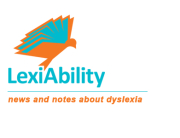In the past month, the media has misinformed the public about recent studies on dyslexia. In pithy little summaries of complicated research, the media has tried to tell us that video games are good for kids with dyslexia, dyslexic musicians are rare, and neurotoxins cause dyslexia.
All of these reports are misleading and false. 
These type of media reports are often recycled summaries of information which generate exciting lead lines but are not intended to provide factual information of studies that are very nuanced in purpose and execution. The studies upon which these assertions are made are often not specifically about dyslexia, or the “fact” as presented by the author is actually a “question” put forth by the researchers that needs more study.
The most recent media reports are trying to assert that dyslexia is a pathology caused by neurotoxins. The article asserts that neurotoxins contribute to neurodevelopmental disabilities, including dyslexia. This predictive link between toxins and dyslexia does not exist in other scientific, peer-reviewed journals–nor does it exist in the study on which the author is reporting.
Below is the researchers’ abstract of the study. You can see how the link can be imagined–but you can also see how the link is not made between neurochemicals and dyslexia!
“Neurodevelopmental disabilities, including autism, attention-deficit hyperactivity disorder, dyslexia, and other cognitive impairments, affect millions of children worldwide, and some diagnoses seem to be increasing in frequency. Industrial chemicals that injure the developing brain are among the known causes for this rise in prevalence. In 2006, we did a systematic review and identified five industrial chemicals as developmental neurotoxicants: lead, methylmercury, polychlorinated biphenyls, arsenic, and toluene. Since 2006, epidemiological studies have documented six additional developmental neurotoxicants—manganese, fluoride, chlorpyrifos, dichlorodiphenyltrichloroethane, tetrachloroethylene, and the polybrominated diphenyl ethers. We postulate that even more neurotoxicants remain undiscovered. To control the pandemic of developmental neurotoxicity, we propose a global prevention strategy. Untested chemicals should not be presumed to be safe to brain development, and chemicals in existing use and all new chemicals must therefore be tested for developmental neurotoxicity. To coordinate these efforts and to accelerate translation of science into prevention, we propose the urgent formation of a new international clearinghouse.”
The ONLY time dyslexia is mentioned in the research is in the abstract. IT is not mentioned ONCE in the research itself.
Below is my response to the article by Mr. Lewis which tries to tell the public that dyslexia is linked to neurotoxins:
Dyslexia is not tied to intelligence. Dyslexia is also associated with strengths as well as weaknesses (like any brain type). Although I do not doubt that toxins affect brain functioning in all sorts of ways, the researchers and Lewis are off in grounding their premise that dyslexia is a disability and a disease.
My years of experience as a remediation specialist tells me that the weaknesses of dyslexia are helped with different methods of instruction–and if we offer these methodologies early enough, many of the weaknesses associated with dyslexia never come to fruition. Also, dyslexia is typically not considered “pathological” outside of school. In fact, the diagnostic criterion of the APA’s DSM-V distinctly ties dyslexia to school! So, I offer that maybe the real “toxin” is the prevailing method of instruction in the traditional curriculum (text-based, test-based).






Connect with LexiAbility
RSS
Facebook
Twitter